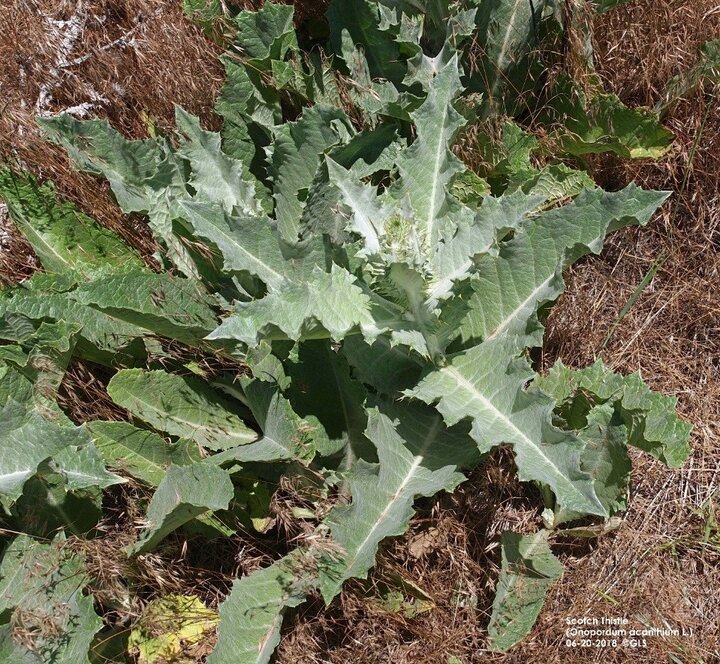This is one in a series of articles on current or potential invasive species in Nebraska. Early Detection and Rapid Response (EDRR) is a concept to identify potentially invasive species prior to or just as the establishment of the invasive is taking place. An Integrated Pest Management plan (IPM) can be developed to manage, contain and eradicate the invasive species before it can spread further. This will avoid costly, long-term control efforts.
The devastation Nebraska has experienced these past few months is unimaginable. Communities and people’s lives have changed forever. Though not the highest priority, one item that should be addressed in the near future is the chance that invasive plants may show up in areas that have never had them before.
Landowners should be aware of this potential problem and be ready to act should the situation arise. Invasive plants move in the environment by several ways, including wind, water and forage stocks. With the extensive flooding that has taken place, it is very possible that seed and plant parts from these plants have moved considerable distances to new areas in the pastures, farm ground and riparian sites. The forages generously shared by producers from other states could also contain other invasive plants not seen in these areas.
Invasive Weeds to Watch For


Following are some of the more invasive weed species that landowners should be looking for on their property. A short description given for each, with web links for more detailed information.
Canada thistle, Cirsium arvense L., perennial, reproduces by seed and rhizomes, non-native
Musk thistle, Carduus nutans L., biennial, reproduces by seed, non-native
Bull thistle, Cirsium vulgare, biennial, reproduces by seed, non-native
Scotch thistle, Onopordum acanthium L., biennial, reproduces by seed, non-native
Plumeless thistle, Carduus acanthoides L., biennial, reproduces by seed, non-native
Russian knapweed, Acroptilon repens, perennial, reproduces by seed and rhizomes, non-native
Spotted knapweed, Centaurea maculosa auct., biennial, reproduces by seed, non-native
Diffuse knapweed, Centaurea diffusa, annual or biennial or short-lived perennial, reproduces by seed, non-native
Purple loosestrife, Lythrum salicaria L., perennial, reproduces by seed and rhizomes, non-native
Phragmites, Phragmites australis, perennial, reproduces by seed, rhizomes and stolons, non-native
Absinth wormwood, Artemisia absinthium, perennial, reproduces by seed and short roots, non-native
Sericea lespedeza, Lespedeza cuneata, perennial, reproduces by seed, non-native
Management
Prevention is the best and cheapest management option. Scout and monitor your land for any new plants. If you cannot identify the plants, contact your local Nebraska Extension Educator or local Nebraska Weed Control Authority for assistance.
It is best to control these plants during the early stages of growth. Do not let them become established, as control and maintenance of these plants will become more costly and time-consuming. Managing seed production is the key to keeping these plants from spreading. Several management options may be needed.
Perennial plants are best managed early in their growth stage before they become established. Some perennial plants and most biennial plants are managed during the rosette stage in the fall, after a frost.
Mowing can be done but will have to be repeated for the regrowth as it does not kill the plants. Mowing plants with visible seed heads will not prevent seed production.
Chemical treatment should follow mowing to prevent seed formation. Numerous chemical treatment options are available to manage these weeds. Products containing aminopyralid, clopyralid, chlorsulfuron, dicamba, metsulfuron, picloram (Restricted Use), triclopyr, glyphosate (non-selective), and 2,4-D have been shown to work. Tank mixes of several of these compounds may provide better control. Adding a non-ionic surfactant to the herbicide mix will aid in control; however retreatment may be necessary.
Be sure to select a product labeled for the site and the weed. Read, understand and follow all label instructions when using any pesticide.
More Information
Nebraska Extension has a number of publications on management of thistle and other invasive species at https://extensionpubs.unl.edu/. Search “thistle” or “invasive.”
The Nebraska Weed Control Association also has an excellent website for more information at http://neweed.org/. Similarly, the Nebraska Invasive Species Program offers helpful information at https://neinvasives.com/.
The Nebraska Department of Agriculture has an excellent weed identification book, “Weeds of the Great Plains” at http://www.nda.nebraska.gov/forms/nw11.pdf
http://www.ianrpubs.unl.edu/sendIt/ec171.pdf
